Sander, August (1876-1964), photographe allemand, auteur de Hommes du XXe siècle, véritable encyclopédie illustrant les différentes classes sociales représentatives de la République de Weimar.
Chronique August Sander, visage d'une époque Actualité La « Petite histoire de la photographie » de Walter Benjamin, en 10 épisodes Actualité Sotheby n'a pas dépassé le téléthon Livre August Sander - Voir Observer Penser Livre August Sander de Susanne Lange Livre August Sander : Hommes du XXe siècle - Analyse de l'oeuvre Vente Lempertz - Photography Auctions in Cologne Vente Vente aux enchères chez Sotheby Paris Vente Auction : Modern and Contemporary Photographs - Villa Grisebach (Berlin) Vente Vente Christie's: Agathe Gaillard, souvenirs d'une pionnière de la photographie Vente VAN HAM - Auction Photographs of the 19th, 20th and 21st Century Vente 8th WestLicht Photography Auction Vente Auction Photography / Vente de photographies chez Kunsthaus Lempertz Vente Photographs auction Exposition Exhibition : « The Order of Things » from The Walther Collection Exposition Exhibition : « Conflict, Time, Photography » at the Museum Folkwang Exposition Exhibition : Westerwald. Portraits and Landscapes by August Sander Exposition August Sander | The Last People | Feroz Galerie, Bonn Exposition Exhibition RealSurreal at Kunstmuseum Wolfsburg Exposition THE CITY - August Sander Exposition Les désastres de la guerre 1800-2014 Exposition Absence of Subject : Images of Michael Somoroff and August Sander Exposition Michael Somoroff & August Sander at Benaki Museum Exposition August Sander » around Bonn / um Bonn herum Exposition August Sander at the Edwynn Houk Gallery Exposition August Sander et Seidou Keïta : deux observateurs sociaux, à la Walther Collection Exposition August Sander - Sardinien, 1927 Exposition Icons of photography - Treasures from the Karin and Lars Hall collection Exposition La Bohème : The Staging of Artists in photography of the 19th and 20th century Exposition August Sander: Ikonen des Porträtwerks Menschen des 20. Jahrhunderts Exposition August Sander: Icons from the portrait collection Menschen des 20. Jahrhunderts Exposition August Sander : Portraits photographiques issus de l'œuvre Menschen des 20. Jahrhunderts Exposition Sander August - Voir, observer et penser Exposition August Sander - Voir, observer et penser Exposition Face à face exposition Exposition Streetlife Photographs from our collections 1930-1975 Exposition The family of man Exposition August Sander - Hommes du XXème siècle Modifier l'image
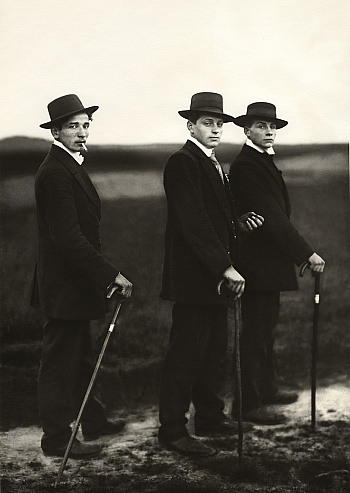 Trois gueules endimanchées. Le regard droit dans l'objectif, les chapeaux enfoncés aussi profondément que leurs cannes dans la terre humide. La clope au bec pour l'un d'eux. Il y a du défi chez ces jeunes paysans de 1914. C'est l'un des clichés les plus célèbres d'August Sander. Preuve s'il en était besoin que ses portraits n'ont jamais rien eu d'anodin. Ses paysages non plus d'ailleurs. L'exposition August Sander Albums revient sur l'oeuvre unique du photographe dans un lieu qui l'est tout autant, Le Point du Jour. Comme un cube d'argent, échoué sur un parking de Cherbourg, et dont l'audace culturelle - à la mesure de cet OVNI architectural – remet au goût du jour ce que l&...
Trois gueules endimanchées. Le regard droit dans l'objectif, les chapeaux enfoncés aussi profondément que leurs cannes dans la terre humide. La clope au bec pour l'un d'eux. Il y a du défi chez ces jeunes paysans de 1914. C'est l'un des clichés les plus célèbres d'August Sander. Preuve s'il en était besoin que ses portraits n'ont jamais rien eu d'anodin. Ses paysages non plus d'ailleurs. L'exposition August Sander Albums revient sur l'oeuvre unique du photographe dans un lieu qui l'est tout autant, Le Point du Jour. Comme un cube d'argent, échoué sur un parking de Cherbourg, et dont l'audace culturelle - à la mesure de cet OVNI architectural – remet au goût du jour ce que l&...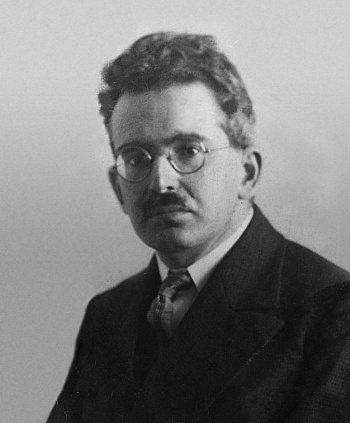 1) Gutemberg et Niepce, même combat
Dans ce texte publié en 1931 dans Die Literarische Welt, l'auteur compare la nouvelle ère inaugurée par la photographie à celle qu'avait lancée l'invention de l'imprimerie, laissant ainsi deviner l'ampleur du travail qu'une « grande » histoire de la photographie aurait à entreprendre. Bien au-delà d'une révolution artistique, c'est un immense bouleversement anthropologique qu'annonce l'ère photographique : nouveau rapport au passé, à l'Histoire, nouvelle forme d'intermédiaire entre le désir et la réalité, nouvelle forme de diffusion de l'information...
2) Le photographe comme bête de ...
1) Gutemberg et Niepce, même combat
Dans ce texte publié en 1931 dans Die Literarische Welt, l'auteur compare la nouvelle ère inaugurée par la photographie à celle qu'avait lancée l'invention de l'imprimerie, laissant ainsi deviner l'ampleur du travail qu'une « grande » histoire de la photographie aurait à entreprendre. Bien au-delà d'une révolution artistique, c'est un immense bouleversement anthropologique qu'annonce l'ère photographique : nouveau rapport au passé, à l'Histoire, nouvelle forme d'intermédiaire entre le désir et la réalité, nouvelle forme de diffusion de l'information...
2) Le photographe comme bête de ... La solidarité a été mise à l'épreuve ces derniers temps en France à l'occasion du téléthon qui a glané 82,353,996 euros. Un record !
Loin de nos préoccupations françaises, un autre record s'est établi outre-atlantique. Il s'agit du record lors d'une vente aux enchères de photographies.
La vente des 11 et 12 décembre derniers au Sotheby de New-York a été exceptionnelle !
Il faut dire que tous les ingrédients étaient réunis. Une des plus importantes collections privées de photographies, celle d'Howard Stein. Elle rassemble 175 chefs-d'oeuvres pour célébrer les 175 ans de la photographie. Des travaux du XIXème siècle aux ima...
La solidarité a été mise à l'épreuve ces derniers temps en France à l'occasion du téléthon qui a glané 82,353,996 euros. Un record !
Loin de nos préoccupations françaises, un autre record s'est établi outre-atlantique. Il s'agit du record lors d'une vente aux enchères de photographies.
La vente des 11 et 12 décembre derniers au Sotheby de New-York a été exceptionnelle !
Il faut dire que tous les ingrédients étaient réunis. Une des plus importantes collections privées de photographies, celle d'Howard Stein. Elle rassemble 175 chefs-d'oeuvres pour célébrer les 175 ans de la photographie. Des travaux du XIXème siècle aux ima... Catalogue de l'exposition qui a lieu du 9 septembre au 20 décembre 2009 à la Fondation Henri Cartier-Bresson sur le grand photographe allemand.
...
Catalogue de l'exposition qui a lieu du 9 septembre au 20 décembre 2009 à la Fondation Henri Cartier-Bresson sur le grand photographe allemand.
...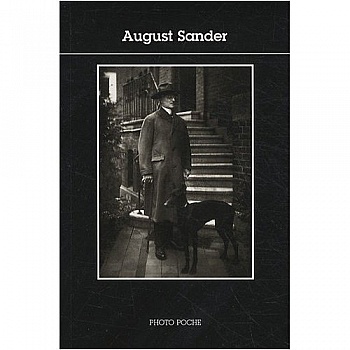 C'est une sorte de grand œuvre, qu'il a voulu mener. Sur trois Allemagne, celle de Guillaume II, celle de Weimar, celle de Hitler. Il a été le premier à mettre la photographie au service d'une idéologie. Avec une admirable obstination, ce maître de la sociologie sans paroles a fait le portrait d'un pays convulsif et secret. Il a porté la même lucide attention aux ouvriers et aux banquiers, aux bourgeois et aux soldats. Il avait une seule ambition: dire la vérité sur les hommes....
C'est une sorte de grand œuvre, qu'il a voulu mener. Sur trois Allemagne, celle de Guillaume II, celle de Weimar, celle de Hitler. Il a été le premier à mettre la photographie au service d'une idéologie. Avec une admirable obstination, ce maître de la sociologie sans paroles a fait le portrait d'un pays convulsif et secret. Il a porté la même lucide attention aux ouvriers et aux banquiers, aux bourgeois et aux soldats. Il avait une seule ambition: dire la vérité sur les hommes.... Au milieu des années vingt, August Sander conçoit un ambitieux projet qu'il intitule Hommes du XXe siècle. A travers cette chronique d'un demi-siècle, le photographe souhaite restituer une image fidèle de la société de son temps. Une nouvelle édition, la plus complète jamais publiée sur l'œuvre de Sander depuis l'édition originale, paraît aujourd'hui en sept volumes aux Éditions de La Martinière.
Complément indispensable de cette publication événementielle, cette Analyse de l'œuvre réunit huit textes critiques inédits, rédigés par les plus grands spécialistes de l'artiste. Fruit de plusieurs années de recherche au sein des archives August Sander à Cologne, ils permettent de situer le travail du photographe dans le mouvement artistique et professionnel de son temps, mais surtout, de mieux comp...
Au milieu des années vingt, August Sander conçoit un ambitieux projet qu'il intitule Hommes du XXe siècle. A travers cette chronique d'un demi-siècle, le photographe souhaite restituer une image fidèle de la société de son temps. Une nouvelle édition, la plus complète jamais publiée sur l'œuvre de Sander depuis l'édition originale, paraît aujourd'hui en sept volumes aux Éditions de La Martinière.
Complément indispensable de cette publication événementielle, cette Analyse de l'œuvre réunit huit textes critiques inédits, rédigés par les plus grands spécialistes de l'artiste. Fruit de plusieurs années de recherche au sein des archives August Sander à Cologne, ils permettent de situer le travail du photographe dans le mouvement artistique et professionnel de son temps, mais surtout, de mieux comp...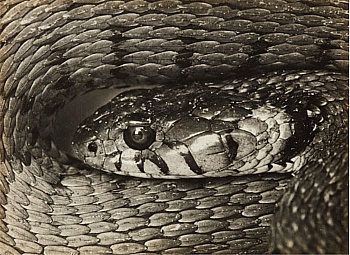 Auction 1068: Photography
Friday, 3 June 2016 2pm
Highlight of this sale is a group of vintage prints by Albert Renger-Patzsch, which includes his famous image "Natterkopf" from 1925. The exceptional work was published in 1928 in his photo book "Die Welt ist schön" (lot 20, €15,000–20,000). The piece was made together with two other animal portraits at Dresden Zoo (lots 18/19, each est. €5,000-6,000) and due to its fascinatingly abstract graphic qualities it has become one of Renger-Patzsch’s most famous works. "Natterkopf" will be coming under the hammer for the first time, together with a selection of other plant, object and landscape photographs by the artist.
A further top lot is an early 1920s vintage print of Karl Blossfeldt’s "Salvia Argent...
Auction 1068: Photography
Friday, 3 June 2016 2pm
Highlight of this sale is a group of vintage prints by Albert Renger-Patzsch, which includes his famous image "Natterkopf" from 1925. The exceptional work was published in 1928 in his photo book "Die Welt ist schön" (lot 20, €15,000–20,000). The piece was made together with two other animal portraits at Dresden Zoo (lots 18/19, each est. €5,000-6,000) and due to its fascinatingly abstract graphic qualities it has become one of Renger-Patzsch’s most famous works. "Natterkopf" will be coming under the hammer for the first time, together with a selection of other plant, object and landscape photographs by the artist.
A further top lot is an early 1920s vintage print of Karl Blossfeldt’s "Salvia Argent...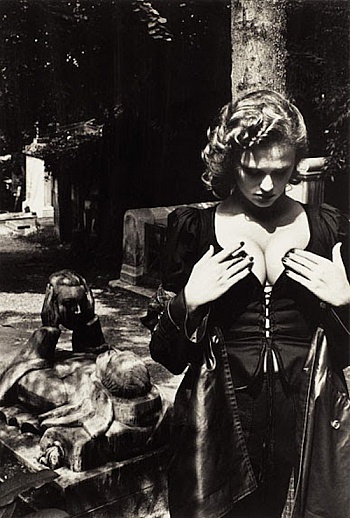 Vente exceptionnelle chez Sotheby à Paris !
Plusieurs clichés uniques seront vendus pour la première fois comme ceux d'Andreas Gursky et d'Edward Burtynsky.
Du 19e siècle ou plus contemporains, américains ou français, du monde du design ou d'avant-garde, autant d'artistes qui pourront s'installer chez vous, de Horst P. Horst, Robert Mapplethorpe, Irving Penn, Helmut Newton, William Klein à Otto Steinert, Adolf de Meyer, Florence Henri et Henri Cartier-Bresson.
Voici une liste non exhaustive des photographes représentés
- 19e siècle : Edouard-Denis Baldus, Charles Nègre
- 20e siècle, Avant-garde : Hannah Höch, Laszlo Moholy-Nagy, August Sander, Man Ray, Hans Bellmer
- Photographes humainiste frança...
Vente exceptionnelle chez Sotheby à Paris !
Plusieurs clichés uniques seront vendus pour la première fois comme ceux d'Andreas Gursky et d'Edward Burtynsky.
Du 19e siècle ou plus contemporains, américains ou français, du monde du design ou d'avant-garde, autant d'artistes qui pourront s'installer chez vous, de Horst P. Horst, Robert Mapplethorpe, Irving Penn, Helmut Newton, William Klein à Otto Steinert, Adolf de Meyer, Florence Henri et Henri Cartier-Bresson.
Voici une liste non exhaustive des photographes représentés
- 19e siècle : Edouard-Denis Baldus, Charles Nègre
- 20e siècle, Avant-garde : Hannah Höch, Laszlo Moholy-Nagy, August Sander, Man Ray, Hans Bellmer
- Photographes humainiste frança...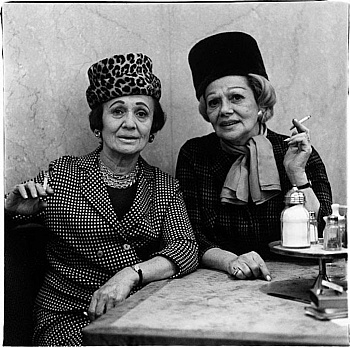 312 lot numbers of modern and contemporary photography will be sold on Wednesday, May 28, at Villa Grisebach in Berlin.
Leading the sale is Irving Penn’s 1970 “3 New Guinea Men, (2 with Pipes),” a group portrait shot during a traditional dance festival, in a platinum palladium print of 1983. The portrait of the tribe members in noble embellishments, who in the photographer’s mobile tent studio assume a pose of highest concentration, is one of Penn’s most formidable works (€ 35,000/45,000).
From the estate of Otto Steinert, one of the pioneering German photographers of the post-war era, two of the most well-known subjects will be sold that document his preoccupation with finding way of personal photographic expression: “Rhythmus und Struktur,” 1951 (€ 20,000/3...
312 lot numbers of modern and contemporary photography will be sold on Wednesday, May 28, at Villa Grisebach in Berlin.
Leading the sale is Irving Penn’s 1970 “3 New Guinea Men, (2 with Pipes),” a group portrait shot during a traditional dance festival, in a platinum palladium print of 1983. The portrait of the tribe members in noble embellishments, who in the photographer’s mobile tent studio assume a pose of highest concentration, is one of Penn’s most formidable works (€ 35,000/45,000).
From the estate of Otto Steinert, one of the pioneering German photographers of the post-war era, two of the most well-known subjects will be sold that document his preoccupation with finding way of personal photographic expression: “Rhythmus und Struktur,” 1951 (€ 20,000/3...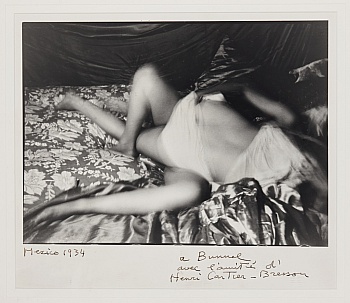 Christie’s a l’honneur d’annoncer la vente, le 14 novembre 2013, de photographies provenant de la collection personnelle d’Agathe Gaillard. Cet ensemble de 169 tirages est le fruit de rencontres et de coups de cœur de celle qui ouvrit la première galerie d’art parisienne consacrée à la photographie, rue du Pont Louis Philippe. De son ouverture à l’été 1975, jusqu’à sa fermeture en 2013, la galerie Agathe Gaillard aura organisé 250 expositions, consacrées à des créateurs aussi essentiels qu’André Kertesz ou Manuel Alvarez Bravo, accueilli des monstres sacrés comme Henri Cartier-Bresson et aidé à l’éclosion de jeunes talents comme Hervé Guibert ou Bernard Faucon. Elle a également accompagné l’incroyable éclosion de ...
Christie’s a l’honneur d’annoncer la vente, le 14 novembre 2013, de photographies provenant de la collection personnelle d’Agathe Gaillard. Cet ensemble de 169 tirages est le fruit de rencontres et de coups de cœur de celle qui ouvrit la première galerie d’art parisienne consacrée à la photographie, rue du Pont Louis Philippe. De son ouverture à l’été 1975, jusqu’à sa fermeture en 2013, la galerie Agathe Gaillard aura organisé 250 expositions, consacrées à des créateurs aussi essentiels qu’André Kertesz ou Manuel Alvarez Bravo, accueilli des monstres sacrés comme Henri Cartier-Bresson et aidé à l’éclosion de jeunes talents comme Hervé Guibert ou Bernard Faucon. Elle a également accompagné l’incroyable éclosion de ...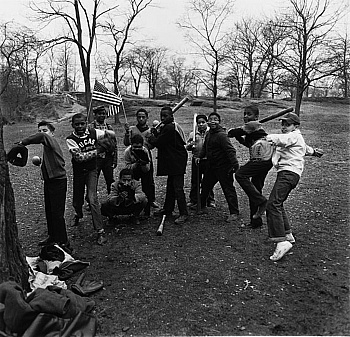 In the upcoming Photography Sale at VAN HAM Fine Art Auctioneers on June 14 in Cologne, the renowned photographers Bernd und Hilla Becher will be represented by a typography of ten “Industriebauten” (Industrial Buildings). The group is a rare edition from the City Museum in Mönchengladbach, dating to 1968 (Estimate: 15,000 – 18,000 euros).
© Höfer, Candida. "Teatro Colón Buenos Aires" 2006
In contemporary photography, two of Becher’s students are also well represented. Candida Höfer's work “Teatro Colón Buenos Aires I 2006“ is the highlight of VAN HAM’s photography sale this spring. The monumental work is sized at 200 x 304 cm and seems to entrance the viewer with the space it port...
In the upcoming Photography Sale at VAN HAM Fine Art Auctioneers on June 14 in Cologne, the renowned photographers Bernd und Hilla Becher will be represented by a typography of ten “Industriebauten” (Industrial Buildings). The group is a rare edition from the City Museum in Mönchengladbach, dating to 1968 (Estimate: 15,000 – 18,000 euros).
© Höfer, Candida. "Teatro Colón Buenos Aires" 2006
In contemporary photography, two of Becher’s students are also well represented. Candida Höfer's work “Teatro Colón Buenos Aires I 2006“ is the highlight of VAN HAM’s photography sale this spring. The monumental work is sized at 200 x 304 cm and seems to entrance the viewer with the space it port...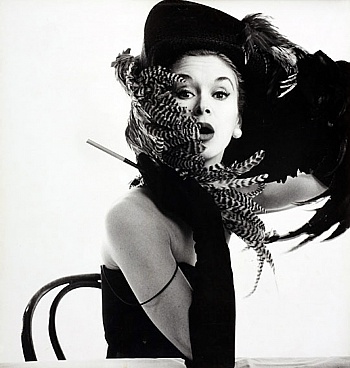 Children from Weimar, Sailors in New York – Highlights at the 8th WestLicht Photo Auction
Over 200 photographs, including numerous vintage prints and rarities, will go under the hammer at the 8th WestLicht Photo Auction on 24th May. The top-class selection was made in collaboration with renowned expert Johannes Faber.
Even the first lot, a daguerreotype from 1841, is an important example from the early days of photography. An Austrian pioneer of photography captured the portrait of a gentleman using the all-metal camera, developed by Voigtländer. Very few of the circular images made with this milestone of photography (the all-metal Voigtländer camera was mounted with the first fast lens in the world, calculated and designed by Josef Petzval) still exist today. The estimated value of the dague...
Children from Weimar, Sailors in New York – Highlights at the 8th WestLicht Photo Auction
Over 200 photographs, including numerous vintage prints and rarities, will go under the hammer at the 8th WestLicht Photo Auction on 24th May. The top-class selection was made in collaboration with renowned expert Johannes Faber.
Even the first lot, a daguerreotype from 1841, is an important example from the early days of photography. An Austrian pioneer of photography captured the portrait of a gentleman using the all-metal camera, developed by Voigtländer. Very few of the circular images made with this milestone of photography (the all-metal Voigtländer camera was mounted with the first fast lens in the world, calculated and designed by Josef Petzval) still exist today. The estimated value of the dague...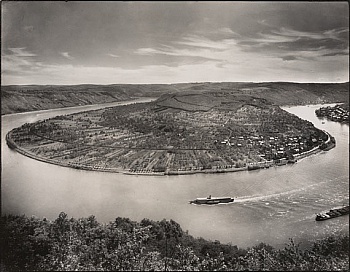 Amongst the highlights of the “Photography” Auction can be counted a number of August Sander’s most important landscape photographs, including his shot of the Rhine river at Boppard from 1938 (lot 27, 8.000 €) as well as another from 1941 where the photographer captures a romantic rear view high over the Rhine and the island of Nonnenwerth (lot 22, 8.000 €).
The prints, all with Sander's characteristic black ink frame and in their original mount, were produced in the early 1950s, a time when he concentrated intensively on the creation of diverse map works on the theme of landscape.
© Otto Steinert, Amalfi Sun, 1963. Ferrotyped vintage gelatin silver print. 54,4 x 48,4 cm. Estimate € 8.000 – 10.000
Another top lot of the auction is Otto Stei...
Amongst the highlights of the “Photography” Auction can be counted a number of August Sander’s most important landscape photographs, including his shot of the Rhine river at Boppard from 1938 (lot 27, 8.000 €) as well as another from 1941 where the photographer captures a romantic rear view high over the Rhine and the island of Nonnenwerth (lot 22, 8.000 €).
The prints, all with Sander's characteristic black ink frame and in their original mount, were produced in the early 1950s, a time when he concentrated intensively on the creation of diverse map works on the theme of landscape.
© Otto Steinert, Amalfi Sun, 1963. Ferrotyped vintage gelatin silver print. 54,4 x 48,4 cm. Estimate € 8.000 – 10.000
Another top lot of the auction is Otto Stei...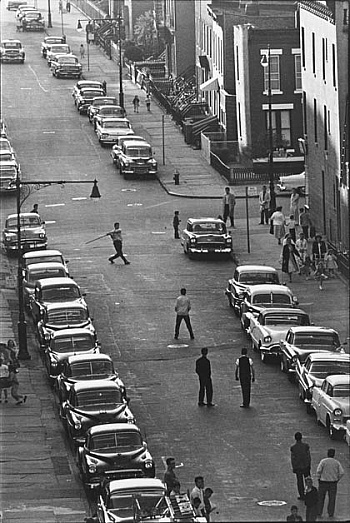 A mid-season Photographs sale composed of high-quality 20th and 21st Century works on January 31, 2008.
Viewing 25 - 30 January
25-26 January, 10am - 5pm
27 January, 12pm - 5pm
28-30 January, 10am - 5pm
Reception 24 January 6-8pm
Please view our Photographs catalogue online and read more about the sale on our website www.phillipsdepury.com.
...
A mid-season Photographs sale composed of high-quality 20th and 21st Century works on January 31, 2008.
Viewing 25 - 30 January
25-26 January, 10am - 5pm
27 January, 12pm - 5pm
28-30 January, 10am - 5pm
Reception 24 January 6-8pm
Please view our Photographs catalogue online and read more about the sale on our website www.phillipsdepury.com.
...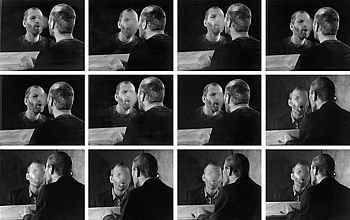 The Walther Collection presents "The Order of Things: Photography from The Walther Collection", a major exhibition exploring how the organization of photographs into systematic sequences or typologies has affected modern visual culture. The Order of Things investigates the production and uses of serial portraiture, conceptual structures, vernacular imagery, and time-based performance in photography from the 1880s to the present, bringing together works by artists from Europe, Africa, Asia, and North America. Curated by Brian Wallis, former Chief Curator at the International Center of Photography in New York, the exhibition will be accompanied by a catalogue published by Steidl/The Walther Collection.
Throughout the modern era, photography has been enlisted to classify the world and its people. Driven by a be...
The Walther Collection presents "The Order of Things: Photography from The Walther Collection", a major exhibition exploring how the organization of photographs into systematic sequences or typologies has affected modern visual culture. The Order of Things investigates the production and uses of serial portraiture, conceptual structures, vernacular imagery, and time-based performance in photography from the 1880s to the present, bringing together works by artists from Europe, Africa, Asia, and North America. Curated by Brian Wallis, former Chief Curator at the International Center of Photography in New York, the exhibition will be accompanied by a catalogue published by Steidl/The Walther Collection.
Throughout the modern era, photography has been enlisted to classify the world and its people. Driven by a be... "Conflict, Time, Photography" presents the many facets of the artistic portrayal of armed conflicts using the medium of photography. Artists such as Don McCullin, Pierre-Antony-Thouret, Simon Norfolk, Stephen Shore, Michael Schmidt and Taryn Simon have depicted acts of war and their legacy, in photographs taken in the mo-ment of the action, as well as days, months, years, and even decades after the event. This major group exhibition has no intention of serving as a ‘history of war photography’, however. It instead explores the various possibilities and strategies that artists and photographers have adopted to try to come to terms with violent conflict, in the hope of overcoming it. On show are some 200 works ranging from a period of just over 150 years in the history of photography, from 1855 to 201...
"Conflict, Time, Photography" presents the many facets of the artistic portrayal of armed conflicts using the medium of photography. Artists such as Don McCullin, Pierre-Antony-Thouret, Simon Norfolk, Stephen Shore, Michael Schmidt and Taryn Simon have depicted acts of war and their legacy, in photographs taken in the mo-ment of the action, as well as days, months, years, and even decades after the event. This major group exhibition has no intention of serving as a ‘history of war photography’, however. It instead explores the various possibilities and strategies that artists and photographers have adopted to try to come to terms with violent conflict, in the hope of overcoming it. On show are some 200 works ranging from a period of just over 150 years in the history of photography, from 1855 to 201... Soon after August Sander (1876-1964) set up his studio in Cologne-Lindenthal in 1910, he found himself drawn again and again to the nearby Westerwald region. Sander photographed many families there over four decades, producing remarkable group and individual portraits as well as characteristic views of the landscape.
The works on view in the exhibition convey an impression of this special part of the August Sander Archive, which encompasses some 2,500 negatives and first became part of Die Photographische Sammlung/SK Stiftung Kultur under the name "Peasant Archive". In the course of research on August Sander’s work, we were able to identify many of the people, families, and places on the negatives by comparing them to documents and numerous interviews conducted since the 1990s with contemporary witness...
Soon after August Sander (1876-1964) set up his studio in Cologne-Lindenthal in 1910, he found himself drawn again and again to the nearby Westerwald region. Sander photographed many families there over four decades, producing remarkable group and individual portraits as well as characteristic views of the landscape.
The works on view in the exhibition convey an impression of this special part of the August Sander Archive, which encompasses some 2,500 negatives and first became part of Die Photographische Sammlung/SK Stiftung Kultur under the name "Peasant Archive". In the course of research on August Sander’s work, we were able to identify many of the people, families, and places on the negatives by comparing them to documents and numerous interviews conducted since the 1990s with contemporary witness... With the seventh group of "People of the 20th Century", FEROZ Galerie closes the August Sander Cycle 2014.
Group VII –
August Sander
Children Born Blind, c. 1930
Gelatin Silver Print, printed later
© 2014 VG Bild-Kunst, Bonn, Die Photographische Sammlung/SK Stiftung Kultur, Cologne
Courtesy by FEROZ Galerie, Bonn
To the last group of photographs in his work "People of the 20th Century” August Sander assigned just one portfolio with 16 portraits of people who are ill, who have disabilities or are frail, as well as recently deceased individuals.
August Sander entitled this portfolio "Idiots, the Sick, the Insane and Matter”, in reference to the people who lived on the margins of society. The subjects are nevertheless portrayed by Sander following the...
With the seventh group of "People of the 20th Century", FEROZ Galerie closes the August Sander Cycle 2014.
Group VII –
August Sander
Children Born Blind, c. 1930
Gelatin Silver Print, printed later
© 2014 VG Bild-Kunst, Bonn, Die Photographische Sammlung/SK Stiftung Kultur, Cologne
Courtesy by FEROZ Galerie, Bonn
To the last group of photographs in his work "People of the 20th Century” August Sander assigned just one portfolio with 16 portraits of people who are ill, who have disabilities or are frail, as well as recently deceased individuals.
August Sander entitled this portfolio "Idiots, the Sick, the Insane and Matter”, in reference to the people who lived on the margins of society. The subjects are nevertheless portrayed by Sander following the...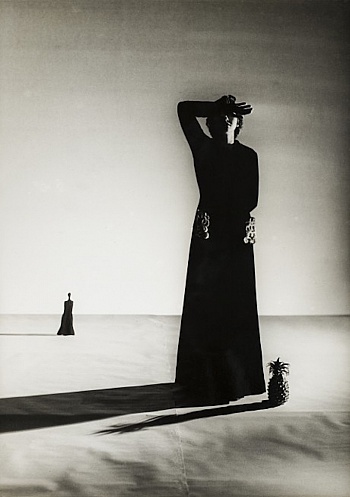 15 November 2014 – 6 April 2015
Nothing gives Surrealism as much meaning as photography. Salvador Dalí, 1929
Erwin Blumenfeld
Skull, 1932/33
Solarisation on gelatin silver paper, 29.6 x 24 cm
photo: Christian P. Schmieder, Munich
© The Estate of Erwin Blumenfeld
Is a photograph a true-to-life reproduction of reality, or is it merely a staged image? This year – the 175th anniversary of the invention of photography – the Kunstmuseum Wolfsburg responds to this question with a comprehensive survey of avant-garde photography between 1920 and 1950. The exhibition RealSurreal presents around 200 masterpieces from the eminent Siegert Collection in Munich. This collection, which has never been shown in its entirety, contains photographs from the Neues Sehen (‘New Vision&rs...
15 November 2014 – 6 April 2015
Nothing gives Surrealism as much meaning as photography. Salvador Dalí, 1929
Erwin Blumenfeld
Skull, 1932/33
Solarisation on gelatin silver paper, 29.6 x 24 cm
photo: Christian P. Schmieder, Munich
© The Estate of Erwin Blumenfeld
Is a photograph a true-to-life reproduction of reality, or is it merely a staged image? This year – the 175th anniversary of the invention of photography – the Kunstmuseum Wolfsburg responds to this question with a comprehensive survey of avant-garde photography between 1920 and 1950. The exhibition RealSurreal presents around 200 masterpieces from the eminent Siegert Collection in Munich. This collection, which has never been shown in its entirety, contains photographs from the Neues Sehen (‘New Vision&rs...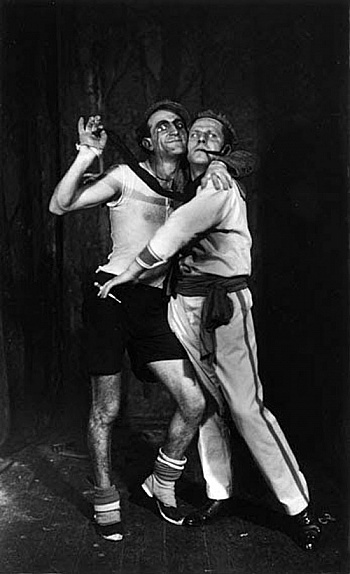 With the portraits in this group, August Sander gives an account of decisive political events and the everyday life in the big city, unfolding the singularities of the cityscape and its inhabitants. Unlike the previously exhibited groups, Sander modified the original composition of The City in the wake of the Second World War, and the folders The Persecuted, Political Prisoners and Foreign Workers were posterior additions to his initial concept from 1925/27. The Persecuted is an assemblage of images taken in 1938, which depicts the passports of Jews who were forced to leave the country due to the political circumstances. Likewise, August Sander added to the folder Political Prisoners some of the images of prisoners made by his son Erich during his detention in Siegburg, who secretly sent the negative plates to his father...
With the portraits in this group, August Sander gives an account of decisive political events and the everyday life in the big city, unfolding the singularities of the cityscape and its inhabitants. Unlike the previously exhibited groups, Sander modified the original composition of The City in the wake of the Second World War, and the folders The Persecuted, Political Prisoners and Foreign Workers were posterior additions to his initial concept from 1925/27. The Persecuted is an assemblage of images taken in 1938, which depicts the passports of Jews who were forced to leave the country due to the political circumstances. Likewise, August Sander added to the folder Political Prisoners some of the images of prisoners made by his son Erich during his detention in Siegburg, who secretly sent the negative plates to his father...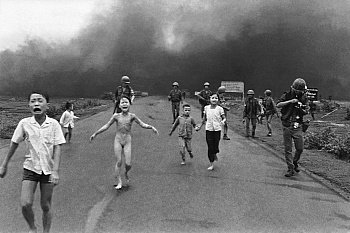 Pourquoi préférons-nous la paix à la guerre ?
Cette exposition nous invite à le comprendre. Elle montre en quoi les artistes ont contribué au mouvement de désenchantement face à la guerre, qui s’amorce au début du 19e siècle, lors des campagnes napoléoniennes.
Depuis toujours placée au centre des valeurs de la société, la guerre comme épisode inévitable allait de moins en moins faire consensus. Après les campagnes napoléoniennes, en 1819, Benjamin Constant pouvait écrire : « Chez les modernes, une guerre heureuse coûte infailliblement plus qu’elle ne rapporte ».
Alors que l’art était depuis toujours dominé par la bataille héroïque, la guerre fut alors de plus en plus représentée sous toutes ses faces, y compris ses conséquenc...
Pourquoi préférons-nous la paix à la guerre ?
Cette exposition nous invite à le comprendre. Elle montre en quoi les artistes ont contribué au mouvement de désenchantement face à la guerre, qui s’amorce au début du 19e siècle, lors des campagnes napoléoniennes.
Depuis toujours placée au centre des valeurs de la société, la guerre comme épisode inévitable allait de moins en moins faire consensus. Après les campagnes napoléoniennes, en 1819, Benjamin Constant pouvait écrire : « Chez les modernes, une guerre heureuse coûte infailliblement plus qu’elle ne rapporte ».
Alors que l’art était depuis toujours dominé par la bataille héroïque, la guerre fut alors de plus en plus représentée sous toutes ses faces, y compris ses conséquenc... Michael Somoroff’s Absence of Subject is a poignant homage to the legendary photographer August Sander’s monumental work People of the 20th Century (Menschen des 20 Jarhunderts). It is a thoughtful and passionate meditation on memory, imagination, human resilience and creativity.
The originality in this body of work is based on Somoroff’s keen sense of observation and interpretation. Absence of Subject lets you revisit August Sander’s work allowing you to understand the richness of Sander’s intent. In each of August Sander’s pictures Michael Somoroff has erased the subject retaining only the background. The unprecedented digital revolution has brought the potential for manipulation into focus. Through the use of software Somoroff has taken out what we have always believed to be ...
Michael Somoroff’s Absence of Subject is a poignant homage to the legendary photographer August Sander’s monumental work People of the 20th Century (Menschen des 20 Jarhunderts). It is a thoughtful and passionate meditation on memory, imagination, human resilience and creativity.
The originality in this body of work is based on Somoroff’s keen sense of observation and interpretation. Absence of Subject lets you revisit August Sander’s work allowing you to understand the richness of Sander’s intent. In each of August Sander’s pictures Michael Somoroff has erased the subject retaining only the background. The unprecedented digital revolution has brought the potential for manipulation into focus. Through the use of software Somoroff has taken out what we have always believed to be ... Through Absence of Subject, Michael Somoroff honours the monumental work of the legendary photographer August Sander entitled People of the 20th Century (Menschen des 20 Jarhunderts). It is a thoughtful and passionate meditation on memory, imagination, human resilience and creativity .
The originality in this body of work is based on Somoroff’s keen sense of observation and interpretation. Absence of Subject lets you revisit August Sander’s work allowing you to understand the richness of Sander’s intent. In each of August Sander’s pictures Michael Somoroff has erased the subject retaining only the background. The unprecedented digital revolution has brought the potential for manipulation into focus. Through the use of software Somoroff has taken out what we have always believed to be the &l...
Through Absence of Subject, Michael Somoroff honours the monumental work of the legendary photographer August Sander entitled People of the 20th Century (Menschen des 20 Jarhunderts). It is a thoughtful and passionate meditation on memory, imagination, human resilience and creativity .
The originality in this body of work is based on Somoroff’s keen sense of observation and interpretation. Absence of Subject lets you revisit August Sander’s work allowing you to understand the richness of Sander’s intent. In each of August Sander’s pictures Michael Somoroff has erased the subject retaining only the background. The unprecedented digital revolution has brought the potential for manipulation into focus. Through the use of software Somoroff has taken out what we have always believed to be the &l...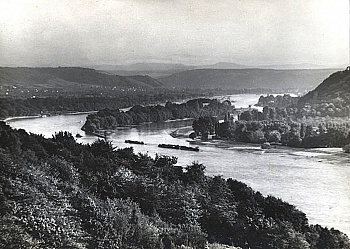 August Sander
around Bonn
Feroz Galerie is please to present an exhibition highlighting the landscape photographie of August Sander. On display will be vintage prints of landscape and nature in and around Bonn.
© August Sander
"On a warm spring morning I packed my seven belongings and hiked through the Nachtigallental. Upon reaching the midpoint of my journey I climbed up a slope, turned and discovered that I was standing on the Wolkenburg. Here I was greeted by a panorama of unbelievable beauty. The tranquility of nature was infused with the gentle rush of the Rhein flowing below. The impressions that morning were magical, indeed almost indescribable. Regardless of where I stood or looked I was greeted by another spellbinding picture."
(August Sander, Excerpt from...
August Sander
around Bonn
Feroz Galerie is please to present an exhibition highlighting the landscape photographie of August Sander. On display will be vintage prints of landscape and nature in and around Bonn.
© August Sander
"On a warm spring morning I packed my seven belongings and hiked through the Nachtigallental. Upon reaching the midpoint of my journey I climbed up a slope, turned and discovered that I was standing on the Wolkenburg. Here I was greeted by a panorama of unbelievable beauty. The tranquility of nature was infused with the gentle rush of the Rhein flowing below. The impressions that morning were magical, indeed almost indescribable. Regardless of where I stood or looked I was greeted by another spellbinding picture."
(August Sander, Excerpt from... Edwynn Houk Gallery is pleased to announce our representation of the August Sander family collection. In celebration, the gallery is presenting a retrospective look at Sander’s career from the series “Citizens of the Twentieth Century”.
August Sander is widely considered to be one of the leading photographers of the twentieth century, and a master of modern photographic portraiture. He is most celebrated for his iconic “Citizens of the Twentieth Century” a project that aspired to be a comprehensive inventory of the German people during the Weimar Republic, and which became his lifelong endeavor. Parts of it were first published in the volume “Face of Our Time” (1929). His photographs are lucid and honest portraits from every strata of that society: peasants, students, lab...
Edwynn Houk Gallery is pleased to announce our representation of the August Sander family collection. In celebration, the gallery is presenting a retrospective look at Sander’s career from the series “Citizens of the Twentieth Century”.
August Sander is widely considered to be one of the leading photographers of the twentieth century, and a master of modern photographic portraiture. He is most celebrated for his iconic “Citizens of the Twentieth Century” a project that aspired to be a comprehensive inventory of the German people during the Weimar Republic, and which became his lifelong endeavor. Parts of it were first published in the volume “Face of Our Time” (1929). His photographs are lucid and honest portraits from every strata of that society: peasants, students, lab...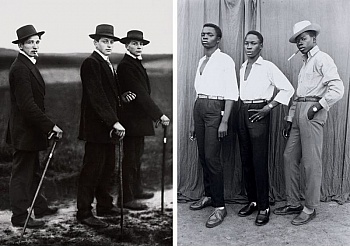 On September 23, the Walther Collection will unite the portraiture of two modern photography masters, August Sander and Seydou Keïta, whose images vividly capture the rapid social transformations of the twentieth century through the faces of everyday people. Encapsulating two distinct cultures in pivotal moments of societal transition, Sander and Keïta's portraits reflect on the experience and role of the individual in Germany and Mali. The dual presentation, on view at the Walther Collection Project Space through January 7, 2012, considers how these prolific photographers documented the visual histories and shifting identities of their two countries.
August Sander and Seydou Keïta: Portraiture and Social Identity brings together approximately 60 black-and-white photographs by the two...
On September 23, the Walther Collection will unite the portraiture of two modern photography masters, August Sander and Seydou Keïta, whose images vividly capture the rapid social transformations of the twentieth century through the faces of everyday people. Encapsulating two distinct cultures in pivotal moments of societal transition, Sander and Keïta's portraits reflect on the experience and role of the individual in Germany and Mali. The dual presentation, on view at the Walther Collection Project Space through January 7, 2012, considers how these prolific photographers documented the visual histories and shifting identities of their two countries.
August Sander and Seydou Keïta: Portraiture and Social Identity brings together approximately 60 black-and-white photographs by the two...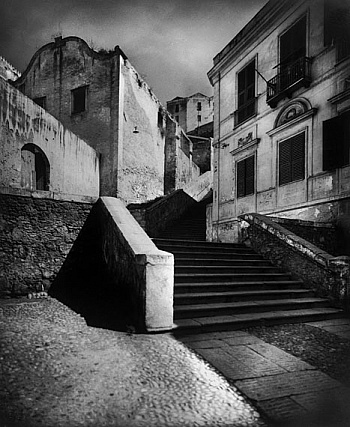 August Sander (1876–1964) became a photographer of international renown as a result of his portraiture work People of the 20th Century. But during a career that spanned more than 50 years, he also made a continual study of other topics – in the field of landscape and architectural photography.
The idea of a trip to Sardinia came initially from August Sander's friend, the writer Ludwig Mathar. The two planned to produce a book about the island, which was a relatively unknown place at the time (the project ultimately failed to be realized, probably because of difficulties with the publisher). Mathar had already been to Sardinia a number of times. For Sander, it was the only time in his life that he spent more than a week on foreign soil. On the morning of Tuesday, 8 March 1927, Sander and Mathar took...
August Sander (1876–1964) became a photographer of international renown as a result of his portraiture work People of the 20th Century. But during a career that spanned more than 50 years, he also made a continual study of other topics – in the field of landscape and architectural photography.
The idea of a trip to Sardinia came initially from August Sander's friend, the writer Ludwig Mathar. The two planned to produce a book about the island, which was a relatively unknown place at the time (the project ultimately failed to be realized, probably because of difficulties with the publisher). Mathar had already been to Sardinia a number of times. For Sander, it was the only time in his life that he spent more than a week on foreign soil. On the morning of Tuesday, 8 March 1927, Sander and Mathar took... It is a great pleasure and honour for us to present such a unique collection of artists that have shaped the development of photography as an art form, says Jens R Jenssen, senior vice president of human resources and leader of the Statoil art programme. And he continues: This exhibition will make a difference.
The exhibition consists of approximately 180 works of photography, spanning from the 1842 to 2002. With a unique collection of original Irving Penns as a basis, the diversity of the collection is presented in a wide number of small exhibitions within the main concept, says Arnt N Fredheim, curator, the Statoil art programme. It’s like a dream has come trough, he continues, as the possibility to make an exhibition of legendary photographers like William Henry Fox Talbot, Edward Weston, Karl Blossfeldt...
It is a great pleasure and honour for us to present such a unique collection of artists that have shaped the development of photography as an art form, says Jens R Jenssen, senior vice president of human resources and leader of the Statoil art programme. And he continues: This exhibition will make a difference.
The exhibition consists of approximately 180 works of photography, spanning from the 1842 to 2002. With a unique collection of original Irving Penns as a basis, the diversity of the collection is presented in a wide number of small exhibitions within the main concept, says Arnt N Fredheim, curator, the Statoil art programme. It’s like a dream has come trough, he continues, as the possibility to make an exhibition of legendary photographers like William Henry Fox Talbot, Edward Weston, Karl Blossfeldt...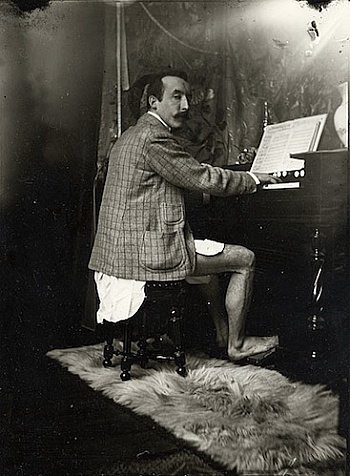 “La Bohème”. The Staging of Artists in photography of the 19th and 20th century In his 1851 novel Scènes de la Vie de Bohème, the French author Henri Murger created the image of the artist as an outsider who, in the midst of the middle class era, lived in romantic poverty. Bohemian life, viewed through rose-tinted glasses and elevated to undying popularity by Puccini’s opera, constituted in Murger’s view a transitional stage: “Bohemia is the first stage in artistic life; it is the preface to the Academy, the hospital, or the Morgue.” The term became synonymous with the 19th century artist who was dependent on an anonymous market and, while free of constraints, had to sell the fruits of his labours without the patronage of the courts. In the middle of ...
“La Bohème”. The Staging of Artists in photography of the 19th and 20th century In his 1851 novel Scènes de la Vie de Bohème, the French author Henri Murger created the image of the artist as an outsider who, in the midst of the middle class era, lived in romantic poverty. Bohemian life, viewed through rose-tinted glasses and elevated to undying popularity by Puccini’s opera, constituted in Murger’s view a transitional stage: “Bohemia is the first stage in artistic life; it is the preface to the Academy, the hospital, or the Morgue.” The term became synonymous with the 19th century artist who was dependent on an anonymous market and, while free of constraints, had to sell the fruits of his labours without the patronage of the courts. In the middle of ...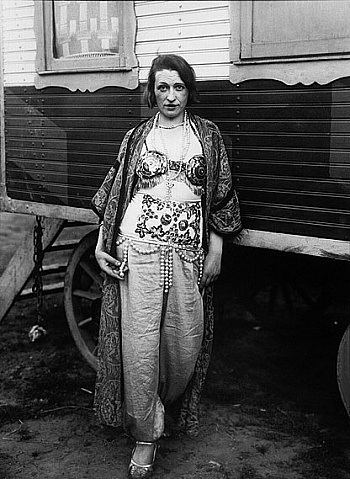 „Das Wesen der gesamten Photographie ist dokumentarischer Art“, so schrieb August Sander in einem seiner Vorträge, die er 1931 im Kölner Westdeutschen Rundfunk hielt. Damit formulierte er einen Kernsatz, der für seine Arbeitsauffassung während seiner gesamten Laufbahn maßgeblich blieb.
Berühmt wurde der Photograph durch das Mitte der 1920er Jahre entworfene Werk Menschen des 20. Jahrhunderts, in dem er Porträts von Menschen unterschiedlicher Gesellschaftsschichten und Berufsgruppen entsprechend einem von ihm angelegten Konzept über Jahrzehnte hinweg zusammenführte. Hundert Arbeiten aus diesem Werk wurden erstmals 1927 in einer Ausstellung im Kölnischen Kunstverein gezeigt und 1929 in Sanders erster, 60 Motive umfassender Buchpublikation Antlitz der Zeit ve...
„Das Wesen der gesamten Photographie ist dokumentarischer Art“, so schrieb August Sander in einem seiner Vorträge, die er 1931 im Kölner Westdeutschen Rundfunk hielt. Damit formulierte er einen Kernsatz, der für seine Arbeitsauffassung während seiner gesamten Laufbahn maßgeblich blieb.
Berühmt wurde der Photograph durch das Mitte der 1920er Jahre entworfene Werk Menschen des 20. Jahrhunderts, in dem er Porträts von Menschen unterschiedlicher Gesellschaftsschichten und Berufsgruppen entsprechend einem von ihm angelegten Konzept über Jahrzehnte hinweg zusammenführte. Hundert Arbeiten aus diesem Werk wurden erstmals 1927 in einer Ausstellung im Kölnischen Kunstverein gezeigt und 1929 in Sanders erster, 60 Motive umfassender Buchpublikation Antlitz der Zeit ve...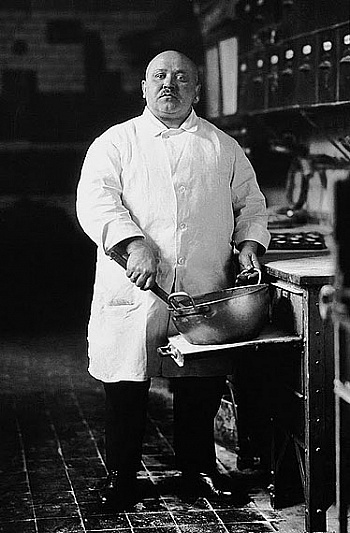 “The essence of all photography is documentary in nature”, observed August Sander in one of the talks that he delivered at the Westdeutscher Rundfunk (West German Broadcasting Institution) in Cologne in 1931. With this he coined a key phrase, which was to shape his view on photography throughout his career.
August Sander gained fame with a photographic work created during the mid-1920s, entitled Menschen des 20. Jahrhunderts (People of the 20th Century), in which he brought together portraits of people from different social backgrounds and occupational categories as part of a self-conceived project that spanned decades. A hundred images from this work were first exhibited in 1927 in an exhibition at the Cologne Kunstverein and subsequently published for the first time in 1929 in Sander’s first book c...
“The essence of all photography is documentary in nature”, observed August Sander in one of the talks that he delivered at the Westdeutscher Rundfunk (West German Broadcasting Institution) in Cologne in 1931. With this he coined a key phrase, which was to shape his view on photography throughout his career.
August Sander gained fame with a photographic work created during the mid-1920s, entitled Menschen des 20. Jahrhunderts (People of the 20th Century), in which he brought together portraits of people from different social backgrounds and occupational categories as part of a self-conceived project that spanned decades. A hundred images from this work were first exhibited in 1927 in an exhibition at the Cologne Kunstverein and subsequently published for the first time in 1929 in Sander’s first book c... « La nature de la photographie dans son ensemble est documentaire », déclarait August Sander au cours de l'une des conférences radiophoniques qu'il tint en 1931 au Westdeutscher Rundfunk (chaîne radiophonique de l'Allemagne de l'Ouest) à Cologne. Cette phrase allait rester au cœur de sa conception du travail durant toute sa carrière.
Le photographe est devenu célèbre par son œuvre Menschen des 20. Jahrhunderts (Hommes du XXe siècle), commencée au milieu des années 1920 et pour laquelle il regroupa pendant plusieurs décennies des portraits de personnes issues de différentes couches sociales et catégories professionnelles, selon un concept imaginé par ses soins. Cent images de cette œuvre furent...
« La nature de la photographie dans son ensemble est documentaire », déclarait August Sander au cours de l'une des conférences radiophoniques qu'il tint en 1931 au Westdeutscher Rundfunk (chaîne radiophonique de l'Allemagne de l'Ouest) à Cologne. Cette phrase allait rester au cœur de sa conception du travail durant toute sa carrière.
Le photographe est devenu célèbre par son œuvre Menschen des 20. Jahrhunderts (Hommes du XXe siècle), commencée au milieu des années 1920 et pour laquelle il regroupa pendant plusieurs décennies des portraits de personnes issues de différentes couches sociales et catégories professionnelles, selon un concept imaginé par ses soins. Cent images de cette œuvre furent... En 1927, à l’occasion de son exposition Hommes du 20ème siècle à la Kunstverein de Cologne, August Sander déclarait que « voir, observer et penser » était le credo de son travail. La Fondation HCB expose, en collaboration avec Die Photographische Sammlung / SK Stiftung Kultur de Cologne, une centaine de tirages du célèbre photographe allemand (1876-1964) qui nous livre une magistrale esquisse de son époque à la fois typologique et topographique, et une grande leçon de photographie.
Tirages d’époque pour la plupart, les épreuves rassemblées sont d’une qualité rare, et l’ensemble constitue une proposition inédite à Paris. Présenter l’œuvre d’Aug...
En 1927, à l’occasion de son exposition Hommes du 20ème siècle à la Kunstverein de Cologne, August Sander déclarait que « voir, observer et penser » était le credo de son travail. La Fondation HCB expose, en collaboration avec Die Photographische Sammlung / SK Stiftung Kultur de Cologne, une centaine de tirages du célèbre photographe allemand (1876-1964) qui nous livre une magistrale esquisse de son époque à la fois typologique et topographique, et une grande leçon de photographie.
Tirages d’époque pour la plupart, les épreuves rassemblées sont d’une qualité rare, et l’ensemble constitue une proposition inédite à Paris. Présenter l’œuvre d’Aug...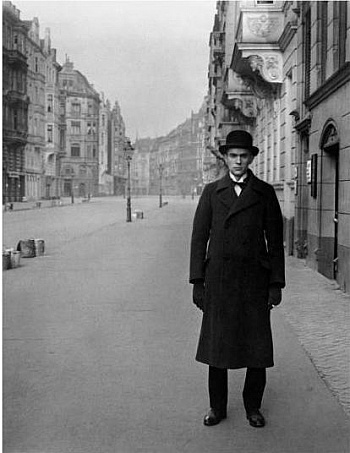 On me demande souvent comment l’idée m’est venue de créer cette œuvre :
Voir, observer et penser, et la question a sa réponse.
En 1927, à l’occasion de son exposition Hommes du 20ème siècle à la Kunstverein de Cologne, August Sander déclarait que « voir, observer et penser » était le credo de son
travail.
La Fondation HCB expose, en collaboration avec Die Photographische Sammlung / Stiftung Kultur de Cologne, une centaine de tirages du célèbre photographe allemand (1876-
1964) qui nous livre une magistrale esquisse de son époque à la fois typologique et topographique, et une grande leçon de photographie. Tirages d’époque pour la plupart, les épreuves rassembl&eacut...
On me demande souvent comment l’idée m’est venue de créer cette œuvre :
Voir, observer et penser, et la question a sa réponse.
En 1927, à l’occasion de son exposition Hommes du 20ème siècle à la Kunstverein de Cologne, August Sander déclarait que « voir, observer et penser » était le credo de son
travail.
La Fondation HCB expose, en collaboration avec Die Photographische Sammlung / Stiftung Kultur de Cologne, une centaine de tirages du célèbre photographe allemand (1876-
1964) qui nous livre une magistrale esquisse de son époque à la fois typologique et topographique, et une grande leçon de photographie. Tirages d’époque pour la plupart, les épreuves rassembl&eacut...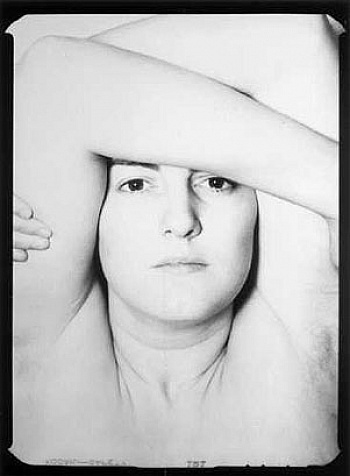 Depuis les portraits en noir & blanc de Diane Arbus, Harry Callahan et August Sander, jusqu’aux oeuvres en couleur d’artistes contemporains tels Serge Comte, Thomas Ruff et Cindy Sherman, l’exposition «Face à face» propose une variation autour de la représentation de l’individu, de son visage comme de son attitude, à travers laquelle affleurent les notions d’identité.
Ouvert mardi et vendredi de 16h à 18h, mercredi de 10h à 13h et de 14h à 18h, samedi de 10h30 à 13h et de 14h à 16h30...
Depuis les portraits en noir & blanc de Diane Arbus, Harry Callahan et August Sander, jusqu’aux oeuvres en couleur d’artistes contemporains tels Serge Comte, Thomas Ruff et Cindy Sherman, l’exposition «Face à face» propose une variation autour de la représentation de l’individu, de son visage comme de son attitude, à travers laquelle affleurent les notions d’identité.
Ouvert mardi et vendredi de 16h à 18h, mercredi de 10h à 13h et de 14h à 18h, samedi de 10h30 à 13h et de 14h à 16h30... Streetlife - Photographs from our collections 1930-1975
In addition to the Soulas exhibition 50 original photographs from our collections, titled "Streetlife" are on show. The selection documents a forty-year development of reportage photography.
During the Weimar Republic the first photo shots in public areas -on the streets- documenting focal pointsand events were done by Alfred Eisenstaedt or Tim Gidal. Outstanding photographers working for the illustrated magazines "Life" and "Stern", such as Jerry Cooke, Robert Lebeck, Stefan Moses and Thomas Hoepker continued in this tradition.
Again and again public streets became a stage for crucial contemporary historical happenings: so for example in the photo series, shot by Roman Vishniac of the Schtetln of Polish Jews, before their exp...
Streetlife - Photographs from our collections 1930-1975
In addition to the Soulas exhibition 50 original photographs from our collections, titled "Streetlife" are on show. The selection documents a forty-year development of reportage photography.
During the Weimar Republic the first photo shots in public areas -on the streets- documenting focal pointsand events were done by Alfred Eisenstaedt or Tim Gidal. Outstanding photographers working for the illustrated magazines "Life" and "Stern", such as Jerry Cooke, Robert Lebeck, Stefan Moses and Thomas Hoepker continued in this tradition.
Again and again public streets became a stage for crucial contemporary historical happenings: so for example in the photo series, shot by Roman Vishniac of the Schtetln of Polish Jews, before their exp... « La plus grande exposition photographique de tous les temps » créée en 1955 par Edward Steichen pour le Musée d’Art Moderne (MoMA) de New York.
dward J : Steichen, photographe américain d’origine luxembourgeoise, commence en 1951, en pleine guerre froide, à préparer son grand projet d’une exposition expliquant l’homme à l’homme par le langage universel de la photographie. Pour réaliser ce projet, il lance un appel à des photographes professionnels et amateurs, à des auteurs renommés ou inconnus du grand public. Son idée fut accueillie avec enthousiasme et il reçut plus de 2 millions d’envois en provenance du monde entier, dont Steichen et son assistant Wayne Miller sélectio...
« La plus grande exposition photographique de tous les temps » créée en 1955 par Edward Steichen pour le Musée d’Art Moderne (MoMA) de New York.
dward J : Steichen, photographe américain d’origine luxembourgeoise, commence en 1951, en pleine guerre froide, à préparer son grand projet d’une exposition expliquant l’homme à l’homme par le langage universel de la photographie. Pour réaliser ce projet, il lance un appel à des photographes professionnels et amateurs, à des auteurs renommés ou inconnus du grand public. Son idée fut accueillie avec enthousiasme et il reçut plus de 2 millions d’envois en provenance du monde entier, dont Steichen et son assistant Wayne Miller sélectio...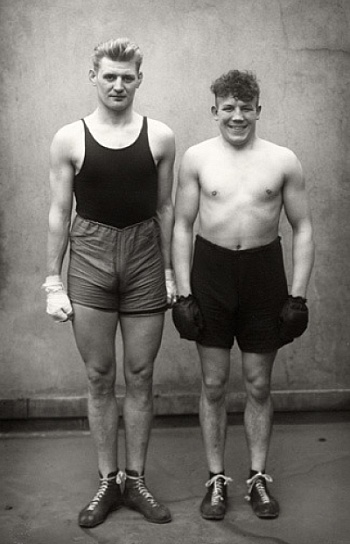 Célèbre dans le monde entier pour ses portraits, August Sander, photographe allemand, sera à l'honneur au Mémorial de Caen, dans le cadre du mois de la photographie. Une centaine de photographies sera exposée du 10 novembre 2007 au 5 janvier 2008 représentant la société allemande de la république de Weimar d'entre-deux guerres.
August Sander est né en 1876 à Herdorf, près de Cologne, en Allemagne et, comme son père, a travaillé dans une mine à partir de 1890. En 1892, un oncle lui offre un appareil photo. Il se met à faire de la photographie pendant son temps libre. Après le service militaire, il fait le tour de l'Allemagne comme photographe. En 1902, il crée son
propre studio en Autriche.
C'est en photographiant des paysans du Westerwald, sa région natale, qu'il a l'idée de son grand oeuvre, intit...
Célèbre dans le monde entier pour ses portraits, August Sander, photographe allemand, sera à l'honneur au Mémorial de Caen, dans le cadre du mois de la photographie. Une centaine de photographies sera exposée du 10 novembre 2007 au 5 janvier 2008 représentant la société allemande de la république de Weimar d'entre-deux guerres.
August Sander est né en 1876 à Herdorf, près de Cologne, en Allemagne et, comme son père, a travaillé dans une mine à partir de 1890. En 1892, un oncle lui offre un appareil photo. Il se met à faire de la photographie pendant son temps libre. Après le service militaire, il fait le tour de l'Allemagne comme photographe. En 1902, il crée son
propre studio en Autriche.
C'est en photographiant des paysans du Westerwald, sa région natale, qu'il a l'idée de son grand oeuvre, intit...